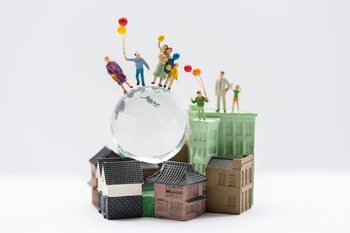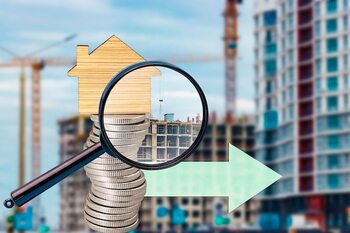The impact of cultural offerings on real estate valuation

The cultural offerings in a city not only enrich the lives of its inhabitants but also play a crucial role in real estate valuation. In Costa Rica, where art, music, and traditions are an integral part of our identity, understanding how these elements impact property appreciation can be decisive for investors and owners. This article will explore the link between local culture and the growth of property values, revealing valuable opportunities for those looking to maximize their investment.
1. The definition of cultural offer and its relevance in the real estate market.
The cultural offer refers to the set of activities, events, and artistic expressions that a community provides for its residents and visitors. This can include everything from museums, theaters, festivals, art galleries, to concerts and traditional fairs. In this sense, the cultural richness of a place not only contributes to the quality of life of its residents but also becomes an attraction for new inhabitants and tourists. By providing spaces where creativity and local traditions are celebrated, a city creates a vibrant environment that can significantly influence the perception of the value of its properties.
The relevance of cultural offerings in the real estate market lies in their ability to transform urban areas and stimulate interest in certain neighborhoods. Areas with a strong cultural presence tend to experience an increase in housing demand, resulting in a constant or even accelerated appreciation of properties. Investors and developers often seek locations near cultural centers or significant events, as this not only enhances the quality of the residential environment but also promises attractive long-term returns. Thus, understanding how this dynamic operates is essential for those looking to maximize their real estate investment.
2. How cultural events enhance the appeal of a location
Cultural events, such as music festivals, art fairs, and traditional celebrations, are catalysts that transform the perception of a location. These activities not only attract local residents but also invite tourists and visitors from other regions, creating a vibrant and dynamic atmosphere. This constant flow of people generates increased demand for accommodation and services in the area, which in turn can lead to an increase in the value of nearby properties. As the community engages in these events, the sense of belonging and local pride is strengthened, which is highly valued by potential buyers.
In addition to the immediate impact on the real estate market, cultural events promote the development of infrastructure and complementary services that benefit the whole community. The need for spaces to carry out these activities drives the improvement and construction of plazas, theaters, and community centers, thus increasing the area's appeal. Likewise, local businesses benefit from an increase in commercial activity during these events, which can result in a more robust economy. This positive cycle not only elevates interest in existing properties but also opens doors to new developments and real estate investments in previously undervalued sectors.
3. The effect of cultural spaces on neighborhood perception
Cultural spaces, such as museums, theaters, and art galleries, are more than just places for exhibitions; they act as hubs that foster social interaction and a sense of community in a neighborhood. When an area has a vibrant cultural offering, it is common to see an increase in the influx of visitors and residents interested in experiencing what the local culture has to offer. This dynamism not only enhances the quality of life but also transforms people's perception of the area, making it a more attractive place to live and work. The presence of these spaces can be a decisive factor for families when choosing where to settle, as they provide educational and recreational opportunities that enrich their daily lives.
Furthermore, cultural spaces can directly influence urban development and real estate investment decisions. Areas with a rich cultural offering tend to experience significant revitalization, which often translates into improvements in infrastructure and public services. This creates a positive cycle: as neighborhoods become more desirable due to their cultural offerings, property prices increase. Attentive investors can take advantage of this trend by considering not only the current state of the real estate market but also the potential for future appreciation linked to the local culture. Thus, investing in properties near cultural centers can prove not only financially beneficial but also contribute to the strengthening of the social fabric of the neighborhood.
4. Successful examples: cities where culture drove added value
A clear example of how culture can drive real estate appreciation can be found in cities like Barcelona, where the artistic renaissance and revitalization of public spaces have transformed entire neighborhoods. The celebration of cultural events, such as music festivals and art fairs, attracts both tourists and new residents looking to engage in a vibrant community. This has not only increased interest in local properties but has also generated a positive effect on real estate market prices, turning previously neglected areas into highly desirable destinations for living and investing.
Another notable case is that of Berlin, which has emerged as a European cultural hub thanks to its rich artistic history and its focus on innovation. The city has managed to take advantage of its abandoned industrial spaces to transform them into galleries, studios, and creative centers. This process has attracted a growing number of artists, entrepreneurs, and young professionals, which has driven significant demand for housing. As more people settle in these creative neighborhoods, property values increase significantly, demonstrating how cultural offerings not only enhance quality of life but also act as a key economic driver for the real estate sector.
5. The relationship between cultural tourism and property valuation
The relationship between cultural tourism and property valuation is a phenomenon that has gained relevance in recent decades. When a city positions itself as an attractive cultural destination, it not only attracts visitors but also generates renewed interest in its real estate. The presence of festivals, museums, art galleries, and cultural events not only enhances the quality of life for residents but also increases the perceived value of nearby properties. Tourists tend to seek places where they can immerse themselves in the local culture, which raises demand for properties in areas with a rich cultural offering, thereby increasing their appreciation.
Moreover, the impact of cultural tourism on real estate valuation translates into new opportunities for owners and investors. By investing in areas with high cultural activity, a significant return can be observed while contributing to the preservation and promotion of local identity. This type of investment not only benefits those seeking vacation rentals or reselling properties at higher prices in the future, but also fosters the sustainable development of the area by attracting more cultural and tourist initiatives. Thus, the positive cycle between culture and real estate continues to feed each other, consolidating cities as desirable destinations for both living and visiting.
6. Analysis of the demographic profile and its connection with the cultural offer
The analysis of the demographic profile of a region is essential to understand how cultural offerings can influence real estate valuation. In Costa Rica, for example, young and dynamic communities tend to place a higher value on proximity to cultural spaces such as theaters, museums, and artistic centers. This type of infrastructure not only attracts residents seeking a lifestyle enriched by culture but also elevates the demand for properties in areas where these offerings are abundant. By segmenting the real estate market according to specific demographic groups, patterns can be identified that reveal how culture impacts buying and renting decisions.
Additionally, the demographic profile provides information about the interests and preferences of the residents, allowing developers and investors to tailor their projects to market needs. For example, a community with a high percentage of families could benefit from family-oriented cultural spaces, while areas with an active student population might require offerings more focused on music and contemporary art. Thus, by understanding these demographic factors in relation to the existing cultural supply, it is possible to anticipate trends in real estate valuation and make strategic decisions that maximize the return on investment in future projects.
7. Strategies for investors: leveraging local culture to increase value
For real estate investors, leveraging local culture can be a key strategy to increase the value of their properties. Areas that benefit from a rich cultural offering, such as museums, art galleries, festivals, and community events, tend to attract a larger number of residents and tourists. This not only increases the demand for housing in those areas but also raises property prices. Investing in real estate near these cultural centers can result in significant value appreciation over time, turning these areas into hotspots for real estate development.
Additionally, investors may consider partnering with local cultural initiatives or participating in projects that promote creativity and artistic expression within their communities. Initiatives such as sponsoring emerging artists or creating multifunctional spaces for cultural activities can not only enrich neighborhood life but also generate a sense of belonging that enhances the property's value. By actively engaging in the local cultural fabric, investors not only contribute to the social and economic well-being of the area but also increase their commercial appeal by positioning their properties as an integral part of the local identity.
8. Future of the real estate market: cultural trends to consider
The future of the real estate market is intrinsically linked to the emerging cultural trends developing in our communities. As citizens seek to live in environments that reflect their values and lifestyles, the demand for properties near cultural centers, such as museums, theaters, and creative spaces, intensifies. Areas that promote a rich cultural offering tend to attract a younger and more diverse audience, which not only increases interest in property purchases but also fosters a rise in property prices. This phenomenon makes it clear that investing in areas with a strong cultural identity can be a smart strategy to maximize return on investment.
Furthermore, trends towards sustainability and well-being are shaping how urban space is valued. Real estate developments that integrate sustainable cultural elements, such as green spaces and eco-friendly design, are increasingly appreciated by environmentally conscious buyers. This inclination towards healthier lifestyles and community connection not only drives the appreciation of specific properties but also transforms entire neighborhoods into desirable destinations. Therefore, understanding these cultural dynamics is essential for any investor or owner looking to not only achieve economic profitability but also contribute to the social and cultural development of their surroundings.



